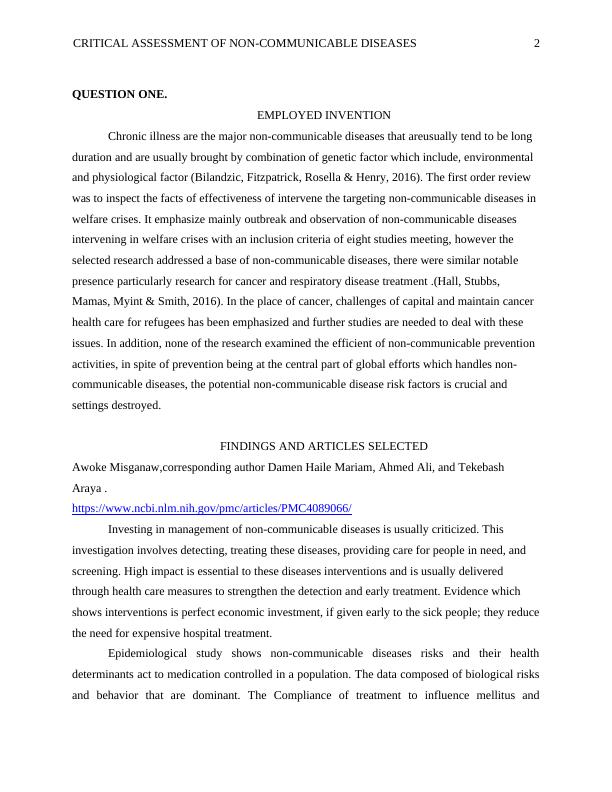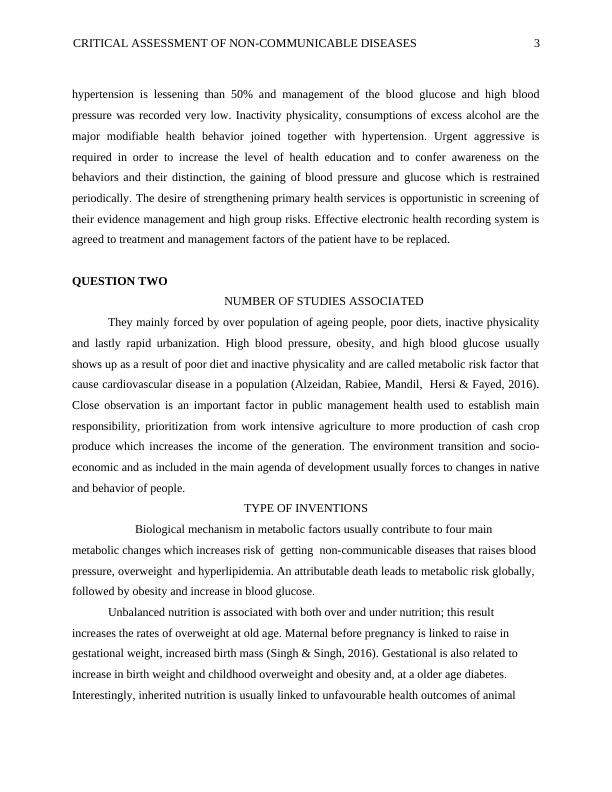Critical Assessment of Non-Communicable Diseases
Critical appraisal of a journal article on non-communicable disease interventions.
7 Pages1711 Words86 Views
Added on 2023-01-20
About This Document
This article provides a critical assessment of non-communicable diseases, including their causes, risks, and interventions. It discusses the impact of chronic illnesses and the importance of early detection and treatment. The article also highlights the need for comprehensive approaches to reduce the risk factors associated with non-communicable diseases.
Critical Assessment of Non-Communicable Diseases
Critical appraisal of a journal article on non-communicable disease interventions.
Added on 2023-01-20
ShareRelated Documents
End of preview
Want to access all the pages? Upload your documents or become a member.
Risk Factors Of Heart Disease
|8
|1936
|17
Chronic Illness: Nurses' Role in Prevention and Patient-Centered Care
|15
|5027
|468
Evidence of Supplementation Usage in the Elders
|6
|1274
|74
Delivering Health Promotion Interventions for Cardiovascular Disease
|8
|776
|445
What are the risk factors commonly shared by lifestyle
|9
|2634
|14
Chronic Conditions in Australia
|10
|2382
|454



